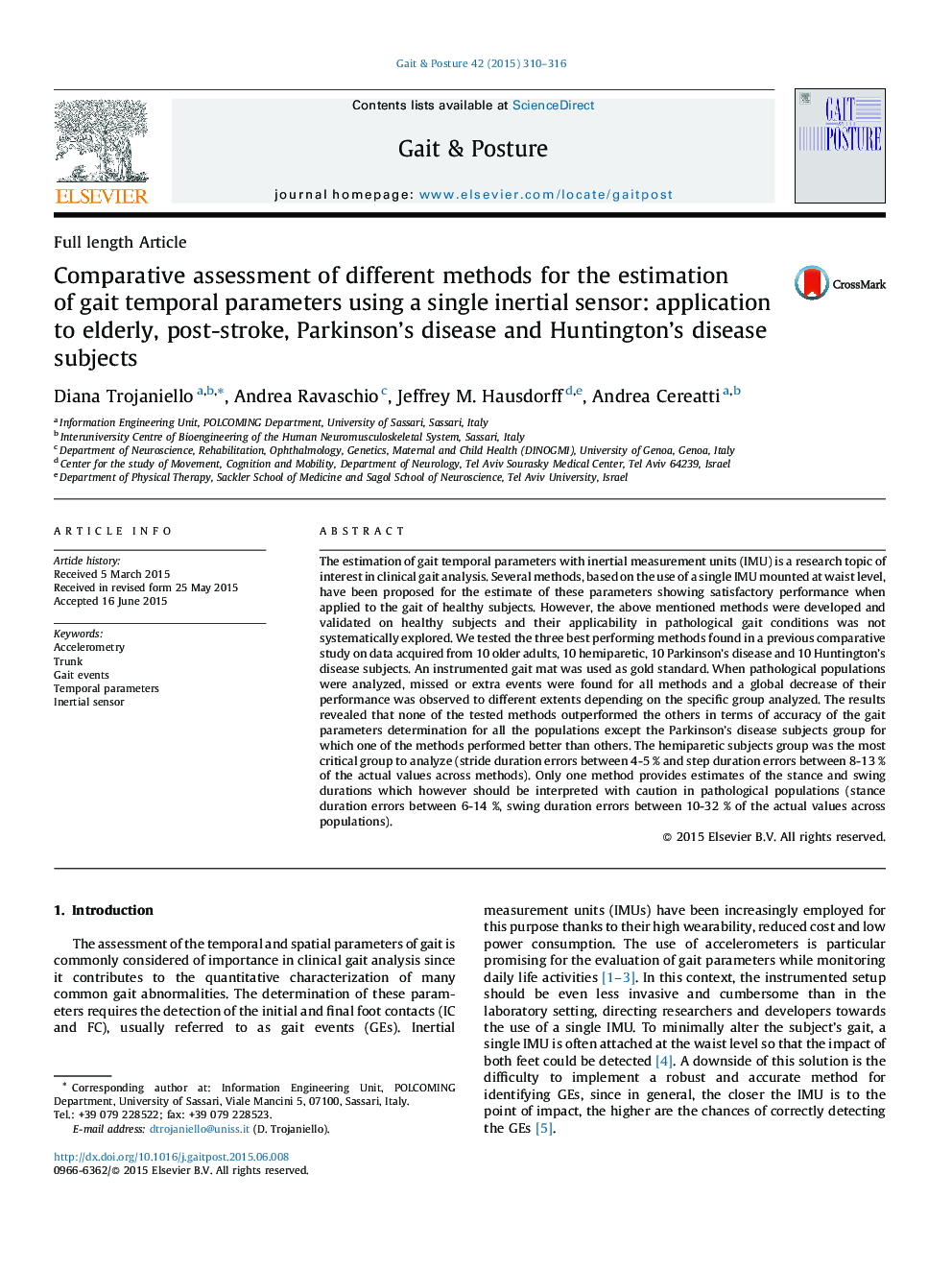| کد مقاله | کد نشریه | سال انتشار | مقاله انگلیسی | نسخه تمام متن |
|---|---|---|---|---|
| 6205572 | 1265626 | 2015 | 7 صفحه PDF | دانلود رایگان |
- Three methods for gait events detection were validated on elderly and various pathological groups.
- A global decrease of performance was observed to different extents depending on the specific group.
- The analysis of the gait of hemiparetic subjects using a single inertial unit on the lower back is critical.
- The estimates of the stance and swing time should be interpreted with caution in pathological groups.
The estimation of gait temporal parameters with inertial measurement units (IMU) is a research topic of interest in clinical gait analysis. Several methods, based on the use of a single IMU mounted at waist level, have been proposed for the estimate of these parameters showing satisfactory performance when applied to the gait of healthy subjects. However, the above mentioned methods were developed and validated on healthy subjects and their applicability in pathological gait conditions was not systematically explored. We tested the three best performing methods found in a previous comparative study on data acquired from 10 older adults, 10 hemiparetic, 10 Parkinson's disease and 10 Huntington's disease subjects. An instrumented gait mat was used as gold standard. When pathological populations were analyzed, missed or extra events were found for all methods and a global decrease of their performance was observed to different extents depending on the specific group analyzed. The results revealed that none of the tested methods outperformed the others in terms of accuracy of the gait parameters determination for all the populations except the Parkinson's disease subjects group for which one of the methods performed better than others. The hemiparetic subjects group was the most critical group to analyze (stride duration errors between 4-5 % and step duration errors between 8-13 % of the actual values across methods). Only one method provides estimates of the stance and swing durations which however should be interpreted with caution in pathological populations (stance duration errors between 6-14 %, swing duration errors between 10-32 % of the actual values across populations).
Journal: Gait & Posture - Volume 42, Issue 3, September 2015, Pages 310-316
